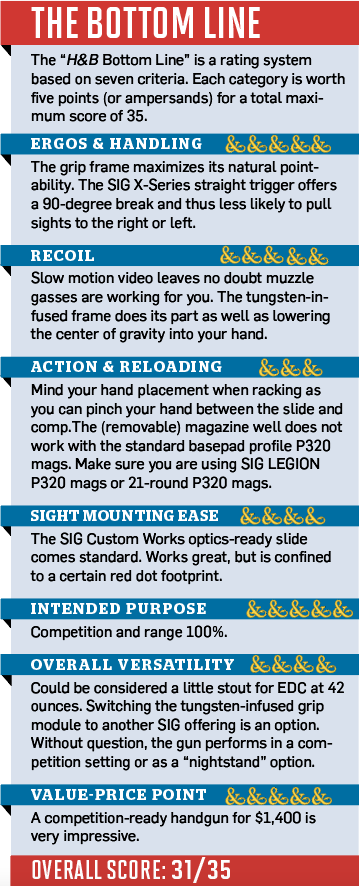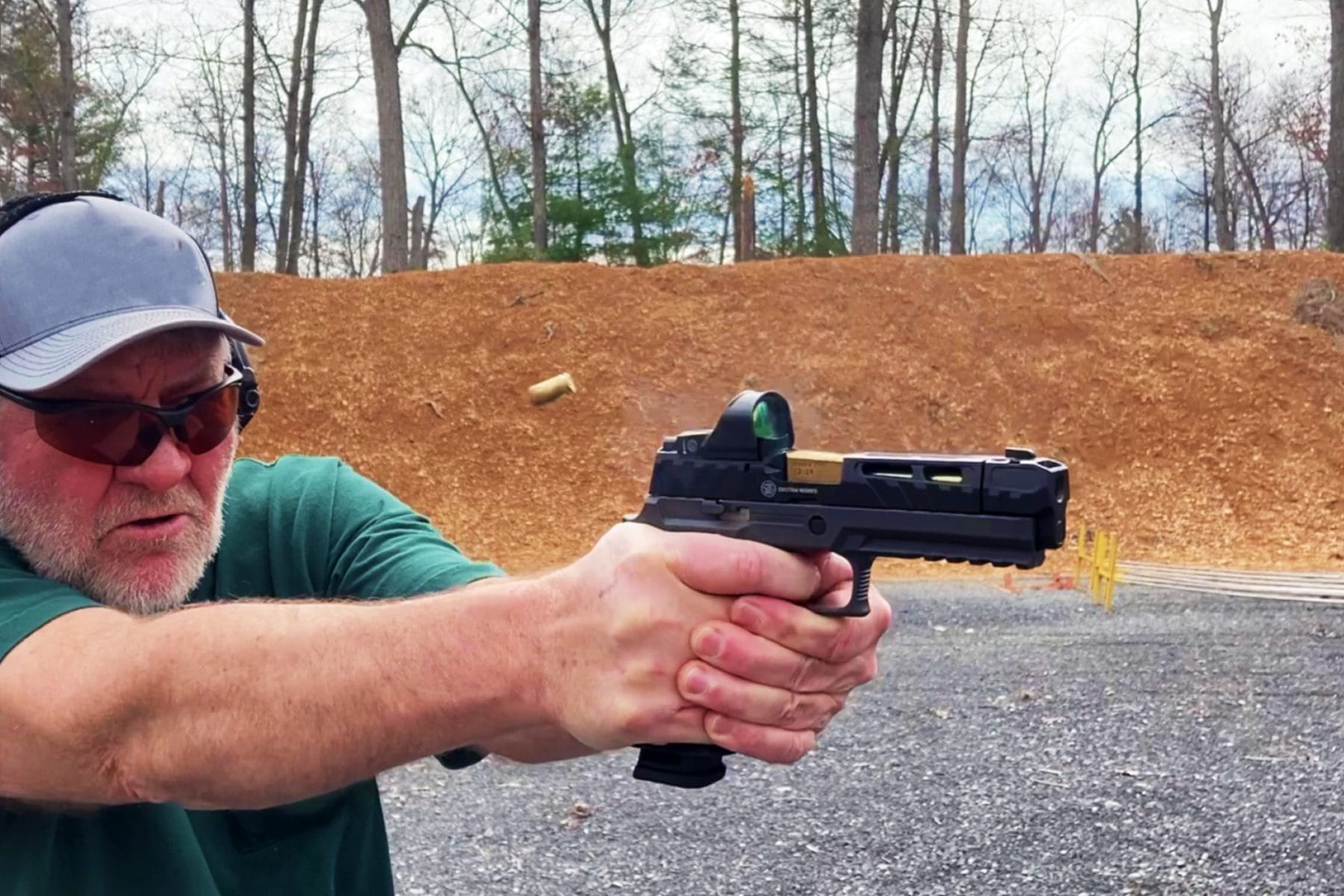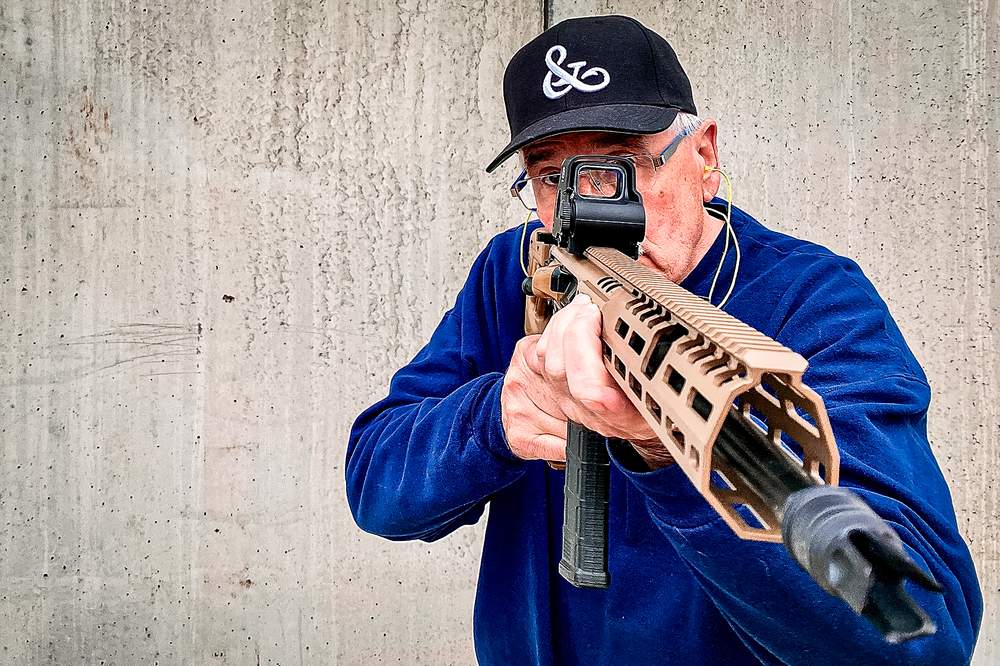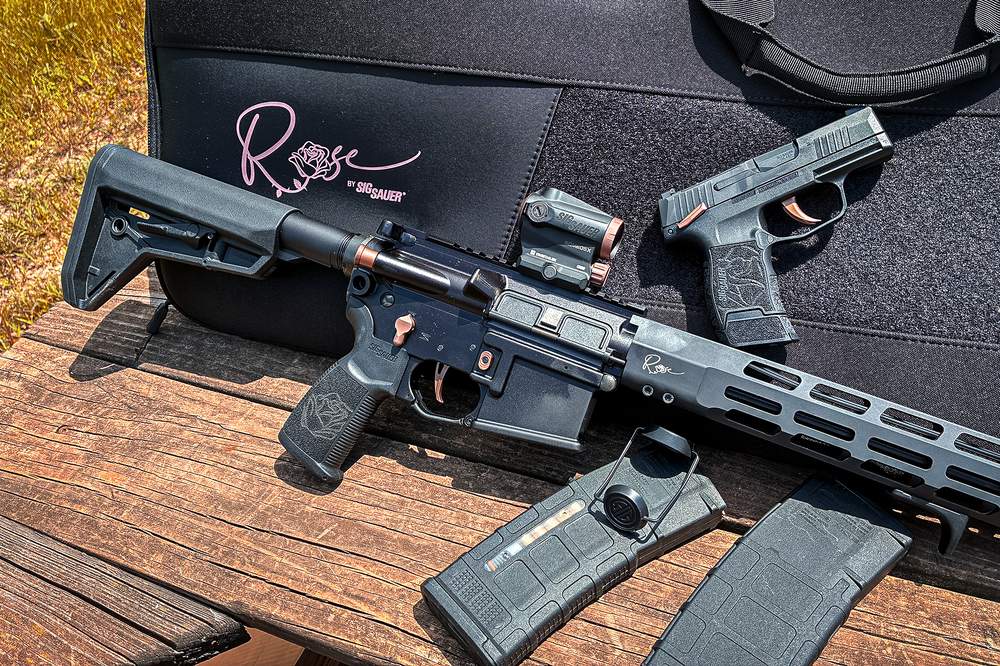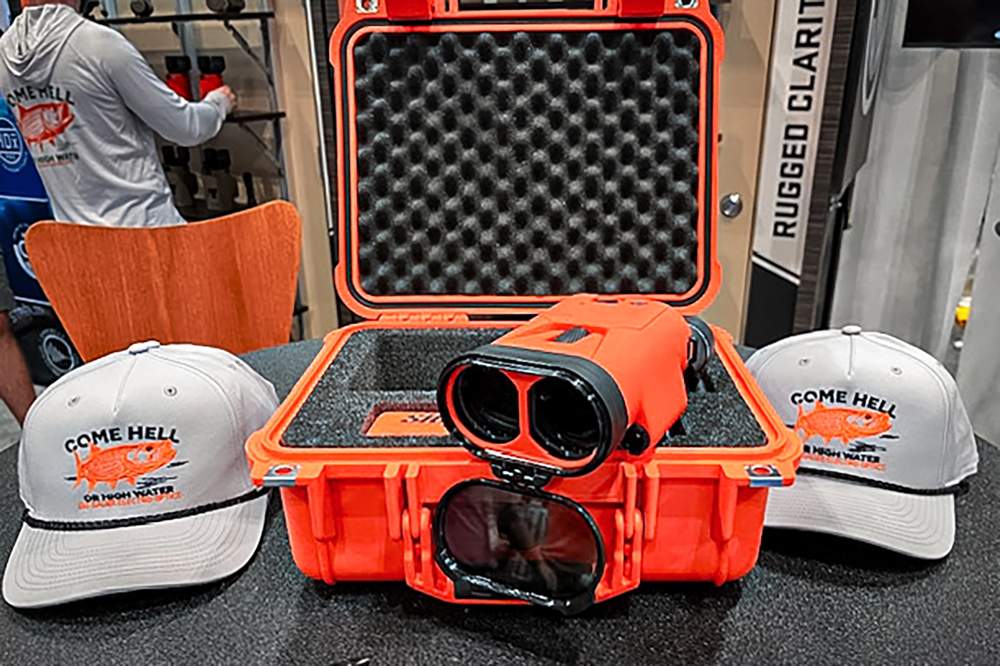Click to listen to the audio version of this article.
SIG P320 Fans Now Have A Compensated Beast Built For Racing Speed & Beauty
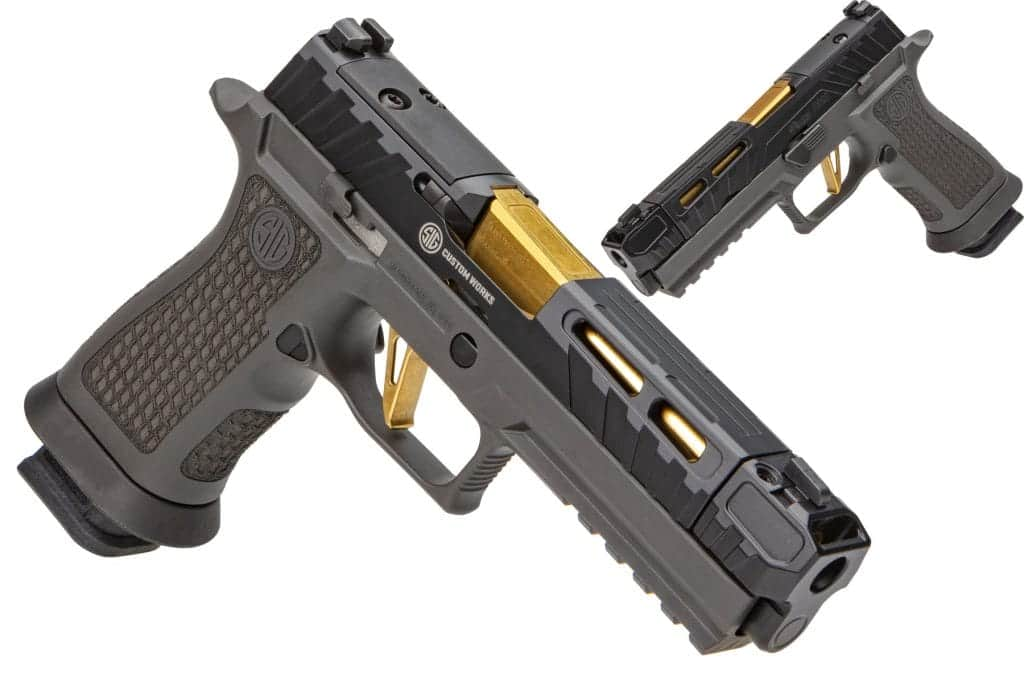
What if there were ways to maximize handgun potency via better muzzle control during recoil and upgrading sights? SIG SAUER is here to help with their P320-Spectre Comp. The Spectre Comp emanates from SIG Custom Works. SIG Custom Works offerings are always distinctive in appearance while offering performance-enhancing features. The P320-Spectre Comp is the epitome of this.
The P320-Spectre Comp is a distinct offering from its P320 stable mates because of its laser-stippled tungsten-infused grip module, Titanium Nitride (TiN) gold-colored barrel/trigger and custom-designed milled slide. The P320-Spectre Comp comes standard with XRay3 day/night sights, flat X-Series trigger, 2-21-round magazines (10-rounders are available), extended flared detachable magazine well, and is optics ready out of the box. With all that said, the Spectre Comp’s most distinguishing feature is the factory-installed compensator.
P320-Spectre Details
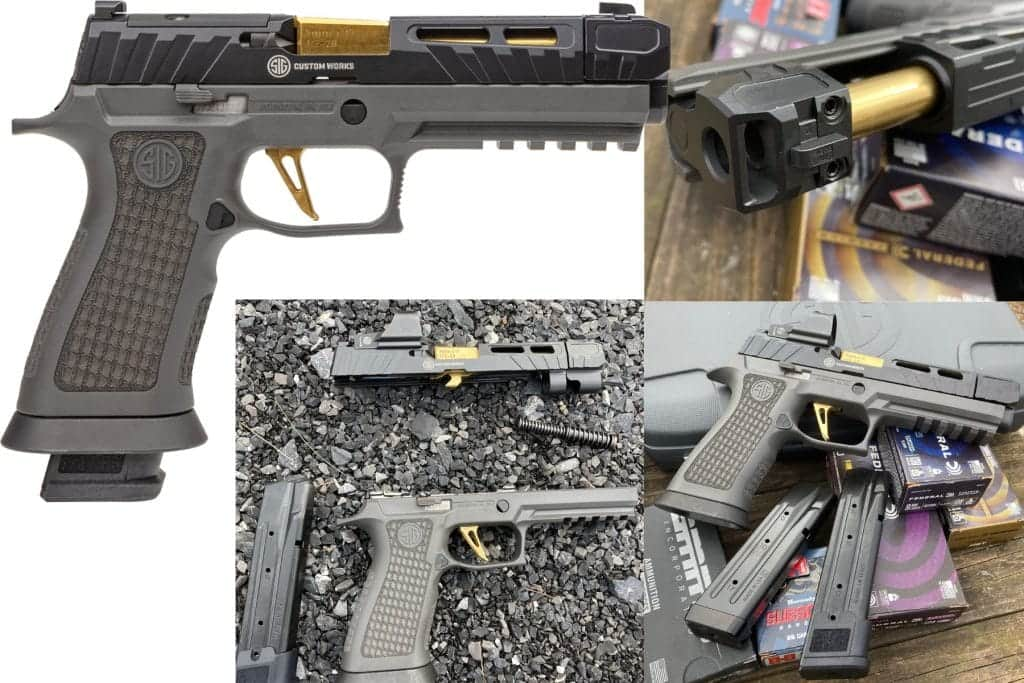
The distinctive angled single chamber SIG compensator is screwed on the Spectre’s 4.6-inch threaded barrel and then secured with two sturdy top-mounted T10-headed fasteners. The fasteners interface with notches milled into the barrel. This is done to ensure proper “timing” of the comp. This is important considering SIG has chosen to use an “island” style front sight mounted on the compensator versus on the reciprocating slide. This allows for superior sight tracking.
The P320-Spectre’s slide-to-compensator interface is not your typical comp arrangement. SIG Custom Works has milled an “O” ring-like projection into the front of the slide that nestles into a similar-sized cavity in the compensator creating a tight fit between the slide and comp. Only 1/8 inch of the compensator protrudes past the frame’s dust cover for a clean look compared to most threaded compensators that seemingly dangle off the front of the threaded barrel. Another SIG comp attention to detail is how the single blast chamber is angled forward. This not only maximizes the positive effect of gas venting to minimize muzzle rise, but also keeps these gases from smacking a shooter in the face.
The Way Of The Red Dot
The two most obvious handgun equipment upgrades over the last 10 years have to be red dot sights (RDS) and, more recently, compensators. My first articles on red dot use appeared in 2010 thus dating my own journey. Though technology should not be used as a false crutch substituting for diligent practice, red dots are a positive compared to the centuries-old iron sights concept. The same can be said of compensators. The SIG P320-Spectre Comp indulges handgun shooters with both. While the SIG XRay3 day/night sights are superior factory sights, the ability to mount a SIG ROMEO1 Pro red dot sight on the Spectre Comp could not be resisted.
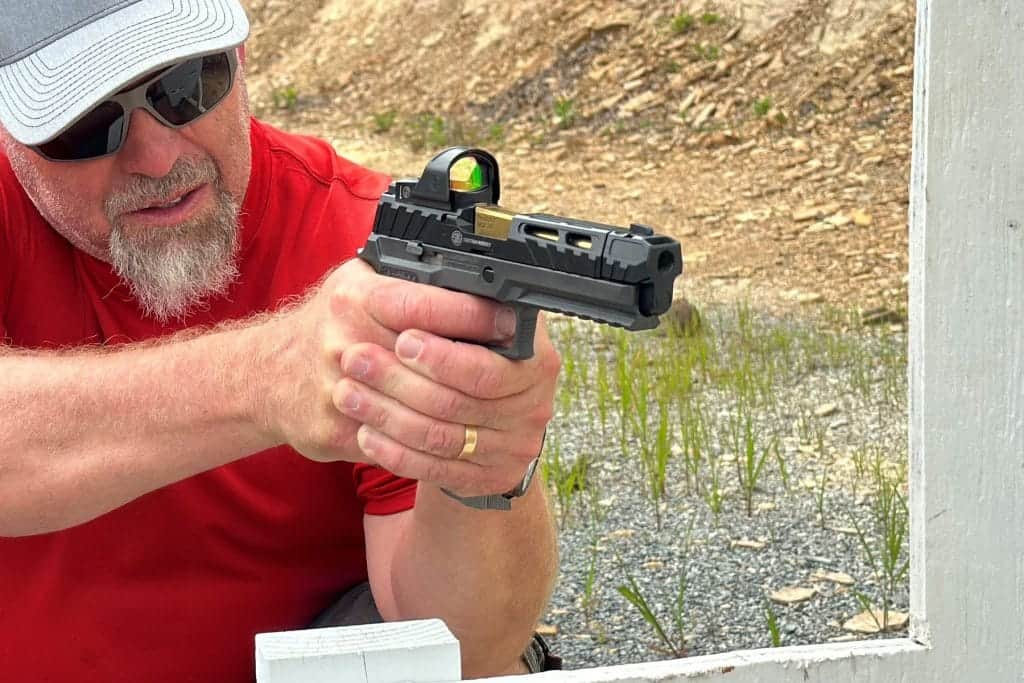
What are the most efficient ways to increase handgun efficiency? Training is without a doubt the correct answer. However, a sound handgun setup can lend a hand as well. A sight system that enhances your ability to place rounds where desired, a well-tuned trigger, and superior control of the muzzle during recoil tops my must-haves list. This is why aftermarket products attract with promises of superior performance; with the SIG Custom Works P320-Spectre Comp no need.
Ken Bloxton’s Origin Shooting Outlaw Match Lessons
Over the 30-plus years of small arms training I sought was predominantly of the tactical variety. Recently, I decided to take a different tactic to increase my skill level with a handgun. This was prompted when a great opportunity presented itself in the form of Ken Bloxton’s Origin Shooting arriving at my home range Echo Valley Training Center (EVTC).
Once I decided to attend my first Origin Shooting Falling Steel Outlaw Match, the process of analyzing which handgun I wanted to use began. The SIG P320-Spectre Comp paired with a SIG ROMEO1 Pro was an easy decision. This placed me in the OPEN Division due to the using a gun equipped with a compensator and an RDS. The availability of SIG P320 21-round and even 30-round magazines was taken advantage of. After all, I was in the OPEN Division of an Outlaw Match. Equipment can’t buy skill but it’s nice to know that you are using the best equipment leaving no doubt deficiencies are found in the image staring back at you in the mirror.
Origin Shooting made a huge difference in my performance with the Spectre Comp. “Shot calling” forces you to really pay attention to the sights as you're firing the gun fast and not get lazy with sight pictures. By watching your sights or dot "lift" you can sense where your bullets are landing without having to check downrange results. So, if you “call the shot” as good based on reading your sights then you know you hit well and keep going, but if you “call the shot” as bad then you can apply a makeup shot at the speed of recoil.
Hyper-Focused Shooting Results
All of this sounds like unobtainable “Shooting Zen” until someone like Ken breaks it down for you. Look at a small spot where we want the rounds to go and aggressively force your eyes to focus there. When transitioning to another target drive your eyes to that next spot. A visual aggressiveness or “hyper-focus” is trained. Vision is what determines speed. We have to see what we need to see in order to pull the trigger, especially when wanting to engage multiple targets at speed or rapid strings of fire. Indexing the dot consistently is crucial so you do not have to adjust/search for it. This leads to grip. If the grip index is off and you need to adjust the dot when on target you will be slower during the initial shot break and during strings of fire when dealing with recoil. Here is some more advice that sounds basic, but is crucial—Grip, grip, grip!
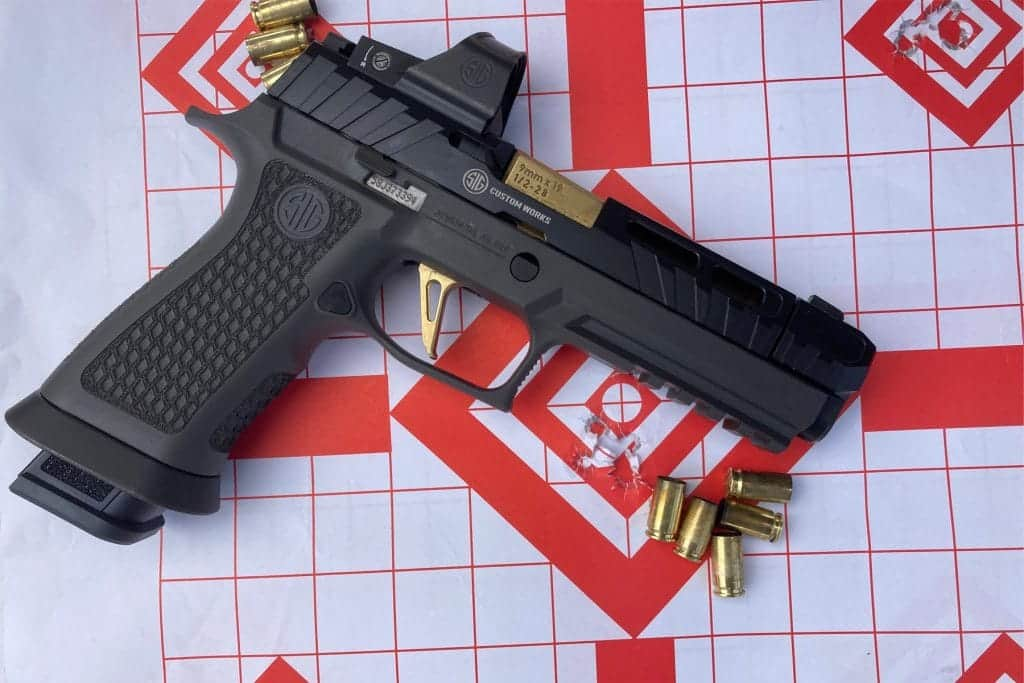
My quest with the SIG P320 Spectre Comp was to improve speed engaging a target and then transitioning between targets. I never doubted the accuracy improvement offered via red dot, especially as engagement distances increase. The Spectre Comp does a great job dealing with muzzle rise via compensator and tungsten-infused frame. The big question on my mind with the P320-Spectre Comp was how the compensator affects the muzzle flip. The ROMEO1 Pro dot stayed on target, usually staying in the “A” Zone or briefly floating out depending on engagement distance—even during multiple-round drills. The Spectre Comp’s simplicity of operation, consistent trigger pull and compensator allowed for rapid engagement of targets. This is further accentuated with well laid out ergonomics ensuring that the hand is near optimum grip position as soon as the Spectre Comp clears the holster.
Parting Shots On SIG SAUER’s P320-Spectre Comp
You cannot default into thinking it is only about the gear—no matter how nice the equipment is in the form of the SIG P320-Spectre Comp. Mindset and training is crucial. The SIG P320-Spectre Comp is a handgun that stacks rounds on top of each other in a hurry. Unabashedly, the P320-Spectre Comp is one of the sweetest-shooting handguns I have experienced over 25 plus years of testing/evaluating weapons.
Specifications: SIG SAUER P320-Spectre Comp
- CALIBER: 9mm
- ACTION: Striker-fired semi-auto
- BARREL: 4.6 inches
- OA LENGTH: 8.5 inches
- WEIGHT: pounds/ounces (empty)
- GRIPS: TXG Full-Size XGRIP Module/LXG laser engraved
- SIGHTS: XRAY3 Day/Night Sights (SIG ROMEO1 PRO mounted for test)
- SLIDE FINISH: Nitron SS
- CAPACITY: 21+1 (10+1 available)
- MSRP: $1,400
- Website: sigsauer.com
Performance: SIG SAUER P320-Spectre Comp
| LOAD | VELOCITY | ACCURACY |
|---|---|---|
| Black Hills 115 FMJ | 1,117 | 2.33 |
| SIG SAUER 147 Match V Crown | 934 | 1.75 |
| Hornady 147 XTP | 985 | 2.25 |
| Wilson Combat 135 Berry HBFN | 921 | 2 |
Bullet weight is measured in grains, velocity in feet per second (fps), and accuracy in inches for best 5-shot group from 25 yards.
